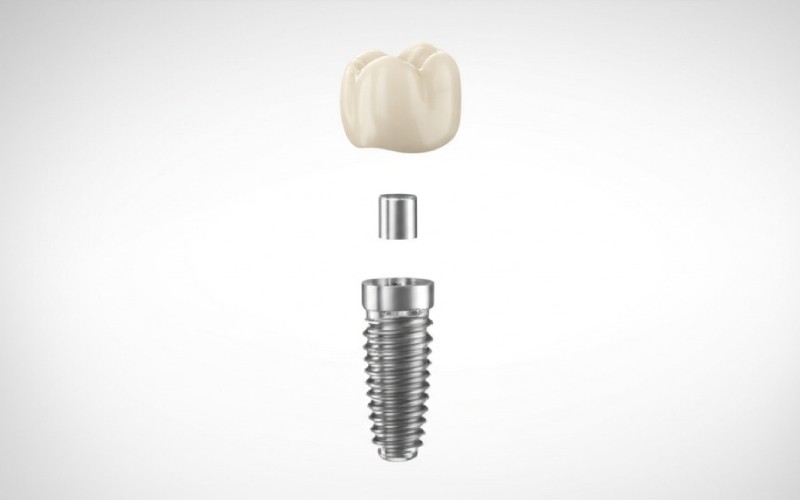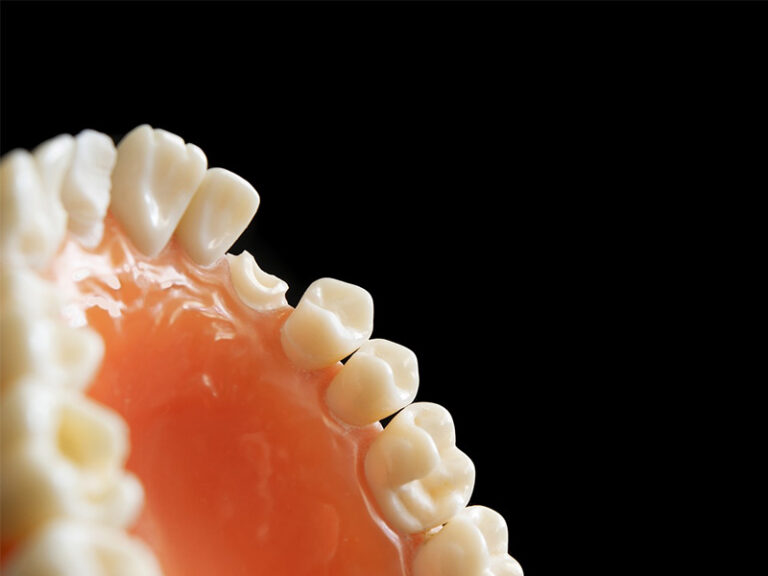
Understanding the Abutment: The Unsung Hero of Your Dental Implant Success
The implant is the screw that goes into the jawbone. The new tooth is the shiny couronne that looks and feels like their natural teeth. But they often miss the small, yet mighty, piece in the middle. That piece is the abutment, and it’s the real hero of the story. This article is worth your time because understanding the abutment is the key to understanding your entire dental implant treatment. Without a good abutment, the whole system can fail. I’m going to walk you through what this part is, why it’s so important, and how it ensures your new smile lasts a lifetime.
Table des matières
What Exactly Is a Dental Implant Abutment?
Let’s start with the basics. It helps to think of a implant dentaire like a lamp. The implant screw in your jaw is like the base of the lamp, providing a strong foundation. The final tooth, known as the crown, is like the lampshade—it’s the part everyone sees. So, what connects the base to the shade? The harp, that metal frame holding the shade. In implant dentistry, the abutment is that connector. A dental abutment is a crucial piece that links the implant and the final restoration.
A complete dental implant consists of three parts: the implant post, the abutment, and the crown. The implant post is the part that a dentist surgically places into your jawbone. It acts as a new root for your missing teeth. Once the implant fuses with the jawbone, it’s time for the next step. The abutment is a small piece, usually made of titanium or zirconia, that is attached to the implant. This little part sticks up just above your gum line. Its one job is to be the solid connection point for your new artificial tooth. Without this key connector, you’d just have a screw in your bone with no way to attach a tooth to it.
The abutment is a crucial component for any successful dental restoration. It’s the bridge between the hidden foundation and the visible crown. The abutment plays a huge role in making sure your new tooth feels secure and looks natural. When you think about it, the abutment has a tough job. It must be strong enough to handle chewing forces while also creating a tight seal with the gum tissue to protect the area around the implant. This is why understanding abutments is so important for anyone going through the dental implant process.

Why is the Role of Abutments in Dental Care So Important?
The importance of the abutment is huge when it comes to the long-term success of your dental implant. The role of abutments in dental care goes beyond just being a simple part. A well-chosen and well-placed abutment ensures that biting and chewing forces are spread out evenly. This prevents excessive pressure on the implant, which could lead to problems down the road. It also helps shape the gum tissue around the abutment, creating a natural-looking gum line.
Think about your natural teeth. They come out of the gums at a specific angle and shape. Abutments are designed to do the same thing for your new implant tooth. A skilled dental professional will select an abutment that positions your new crown perfectly, making it blend in seamlessly with your other teeth. This is critical for both how your smile looks and how well it works.
The abutment also acts as a barrier. It creates a seal at the gum line that helps prevent bacteria from getting down to the implant screw. A poor seal can lead to inflammation or even bone loss around the implant, which is a leading cause of implant failure. So, while you may never see your abutment after the crown is placed, it’s working hard behind the scenes to protect your investment and your oral health. This is why the selection and placement of the abutment is a key step in implant treatments.
How Does a Dentist Place the Abutment?
Once your implant has successfully fused with your bone—a process that can take a few months—it’s time to place the abutment. The procedure for abutment placement is much simpler than the initial implant surgery. Most patients find it very manageable. The abutment is a minor procedure and is often done with just local numbing, right in the dental clinic.
Your dentist will first make a small opening in your gum to get to the top of the dental implant. Sometimes, a special piece called a healing cap was placed during the first surgery to keep the gums away. If so, your dentist will remove that cap. Then, the final abutment is carefully secured to the implant, usually with a tiny screw. Your dentist will tighten it to make sure it’s stable and won’t move. The whole thing is a minor procedure and is often finished in less than an hour.
After the abutment is placed, your gums will need a little time to heal around the abutment. This usually takes a couple of weeks. During this time, the gum tissue will form a nice, tight collar around the base of the abutment. This creates that important seal I mentioned earlier. Once your gums are healed, you’ll be ready for the final step: getting your beautiful new crown placed onto the implant.
Are There Different Types of Abutments?
Yes, and this is where working with a good dentist really matters. There are many different types of abutments available, and choosing the right one depends on your specific dental needs. The two main categories are stock abutments and custom abutments. Stock abutments are mass-produced in standard sizes and shapes. They work well for many common cases where the implant positioning is straightforward.
Custom abutments, on the other hand, are specially made in a laboratoire dentaire just for you. Your dentist takes a precise impression of your mouth and the implant site. The lab then uses this mold to create an abutment that is perfectly angled and shaped for your unique situation. Custom abutments are often used for front teeth, where looks are very important, or in cases where the implant had to be placed at a slight angle.
The material of the abutment can also vary. Most are made from titanium, which is very strong and works well with the body. However, in areas where the gums are thin, a metal abutment may show through as a dark shadow. In these cases, a zirconia abutment, which is tooth-colored, might be a better choice. The decision between these types of abutments is a key part of planning for a successful dental restoration.
How Does the Right Abutment Affect Implant Stability?
While the implant fuses with the jawbone to create the main foundation, the right abutment plays a critical part in long-term implant stability. The abutment is the piece that transfers all the force from chewing from the crown down to the implant post. If the abutment doesn’t fit perfectly, it can create tiny movements when you bite down. Over time, this small wiggling can loosen the implant screw that holds the abutment and implant together.
A well-fitting abutment creates a solid, stable connection. This ensures that when you chew, the force goes straight down the long axis of the implant, which is what it’s designed to handle. A poorly fitting abutment can direct forces at an angle, which can strain the implant and the bone around it. This is why abutment selection is not something to be taken lightly.
Choosing the right abutment is a team effort between you and your dentist. A skilled dental team will look at the location of the tooth, the angle of the implant, and the health of your gums before making a recommendation. Getting this part right is essential for the success of dental implants and for ensuring you have a strong, reliable tooth for years to come.
What is a Healing Abutment and How is it Different?
Sometimes, during implant implant procedures, you’ll hear the term “healing abutment.” This is a temporary piece and it’s different from the final abutment that will support your crown. A healing abutment is a smooth, round cap that is placed on the dental implant either at the same time as the implant is placed or during a second minor surgery. Its main job is to shape the gum tissue while the implant has integrated with the bone.
Think of it as a placeholder. The healing abutment keeps the gums from growing over the top of the implant and starts to form that nice collar of tissue that you need for a natural look. It is also called a healing cap. By the time you are ready for your final abutment, your gums have already been trained into the right shape. This makes the next steps easier and leads to a better-looking result.
When it’s time for the final implant restoration, your dentist will simply unscrew the healing abutment and replace it with the final abutment. This final abutment is the one designed to connect the post to the crown. So, while a healing abutment is temporary, it is a very important step toward a successful implant.
How Does Proper Abutment Placement Lead to Dental Implant Success?
Proper abutment placement is a cornerstone of dental implant success. It’s not just about screwing a part in. It’s about precision. The abutment must be tightened to just the right level. If it’s too loose, it can move and cause problems. If it’s too tight, it can put stress on the implant and the abutment itself. Your dentist uses a special tool to make sure it’s perfect.
The angle and depth of the abutment are also key. The top of the abutment needs to sit at the right height relative to your gum line and the other teeth. If it’s too high or too low, the final crown won’t look or feel right. A well-placed abutment helps create a seamless transition between the implant and the final restoration, which is vital for long-term health and appearance.
When everything is done correctly, the result is a strong and stable foundation for your new tooth. This meticulous process is what allows for a long-lasting dental solution to missing teeth. The success of your dental implant really does depend on every single step being done right, and placing the abutment is one of the most important ones.
Can a Poorly Chosen Abutment Cause Problems?
Absolutely. A poorly chosen or poorly fitted abutment can be the weak link in the entire dental implant system. If the abutment is the wrong size or shape, it can create ledges or gaps around the implant site. These areas are very hard to clean, and they can become traps for food and bacteria. This can lead to gum inflammation, bad breath, and even infection.
Another serious issue is what we call implant failure. If the abutment creates bad biting forces, it can put too much stress on the titanium implant. Over time, this can cause the implant to lose its connection to the bone. This is a very serious problem that can result in losing the entire implant. This highlights why you need high-quality dental work from a team that understands the small details.
Finally, a bad abutment choice can ruin the look of your new tooth. An abutment that is too wide can make the gums recede. An abutment that is the wrong color can make your gums look dark or gray. When it comes to dental implants, every detail matters for achieving a great result. The dental abutment is no exception.
What is the Connection Between the Abutment and Crown?
The connection between the abutment and crown is the final step in your dental treatment. After your gums have healed around your final abutment, your dentist will take a new impression of your mouth. This impression captures the exact position of the abutment in relation to your other teeth. This mold is sent to a dental lab where your permanent dental crown is made.
The crown is designed to fit perfectly over the abutment, like a thimble on a finger. There are two main ways to attach the crown. It can be cemented onto the abutment, which is a very common method. Or, it can be a screw-retained crown, where a small screw goes through the crown and into the abutment to hold it in place. Your dentist will choose the best method for your situation.
This final connection is what completes your implant restoration. The abutment provides the strong, stable base, and the crown provides the beautiful, functional tooth. The link between the implant, abutment, and crown must be perfect for the whole system to work as it should. This is the dental implant and the final step to restoring your smile.

How Do You Care for Your Abutment and New Tooth?
Caring for your new implant is all about good oral hygiene. Even though your new tooth can’t get a cavity, the gums and bone around it can still get sick. You need to brush and floss around your new crown just like you do with your natural teeth. It’s very important to keep the area where the crown meets the gum clean. This is the area directly over the abutment.
Your dentist or hygienist will show you the best way to clean around the implant site. They might recommend special floss, small brushes, or a water flosser to clean the area well. Good oral hygiene prevents bacteria from building up, which protects the seal around your abutment and keeps your gums healthy.
Regular check-ups at your dental clinic are also a must. During these visits, your dental team will check the health of your gums and make sure the abutment and crown are still tight and stable. This ongoing dental care is essential for the success of dental implants. A successful dental implant is a partnership between a skilled dental team and a patient who is committed to good care at home.




